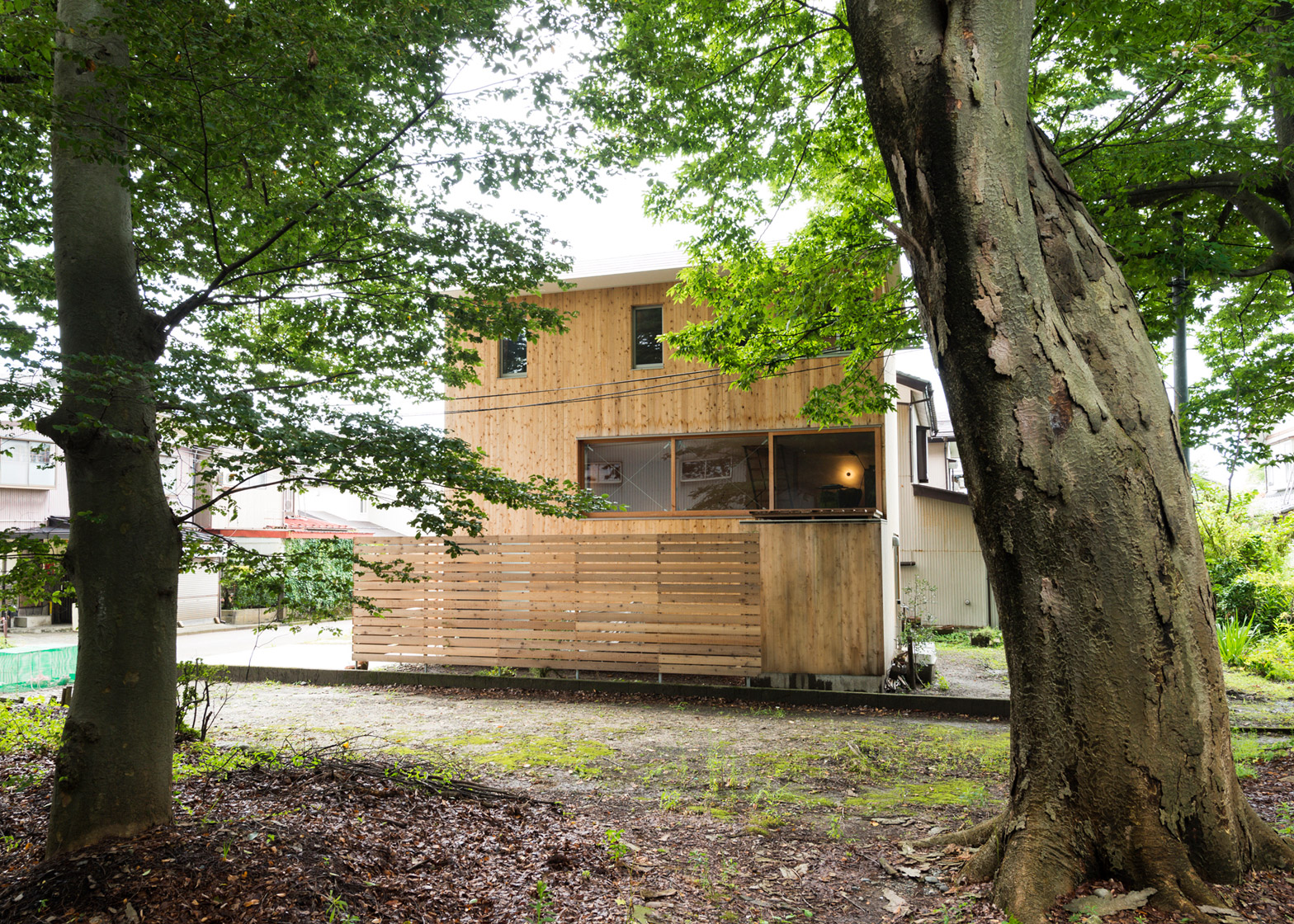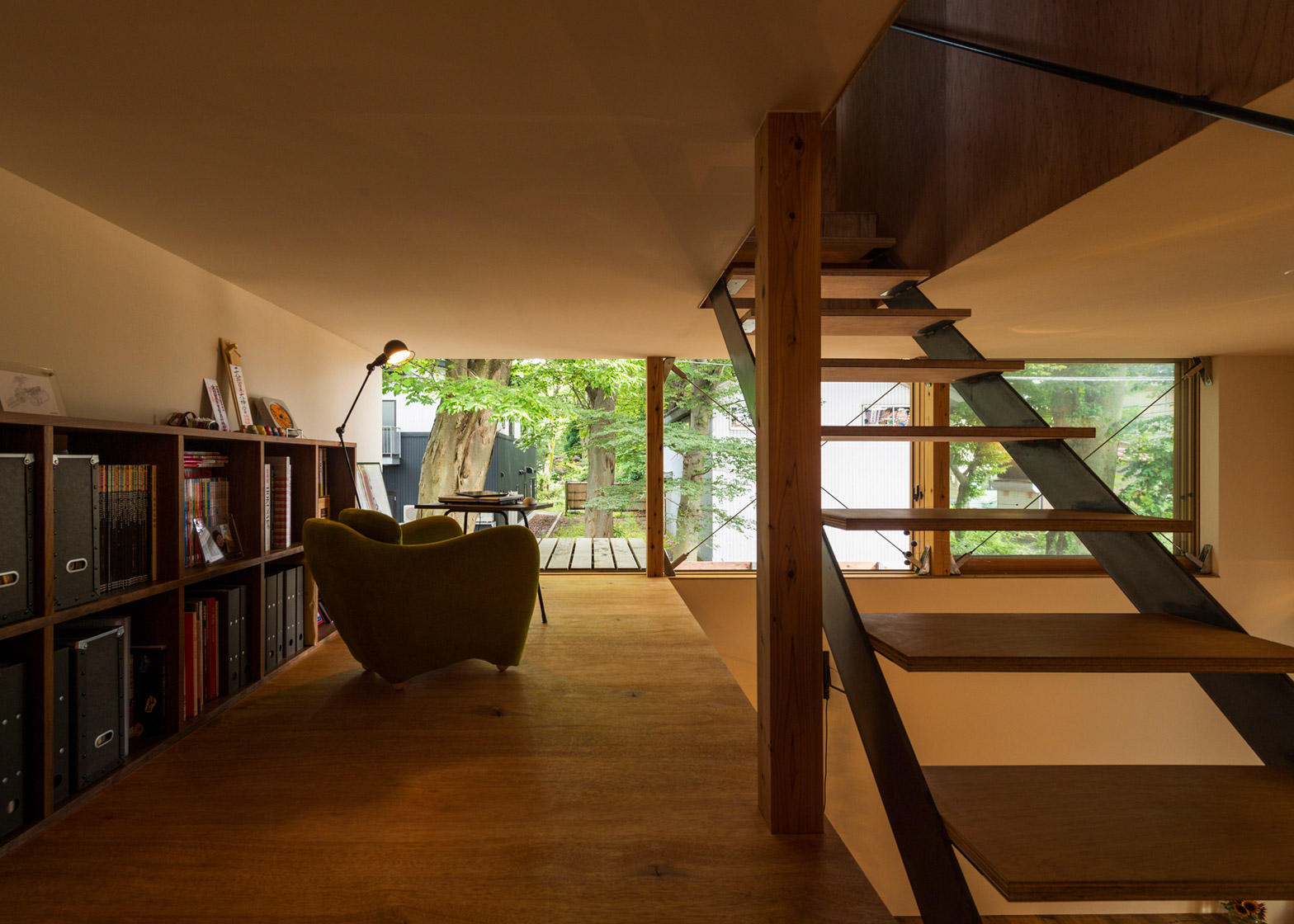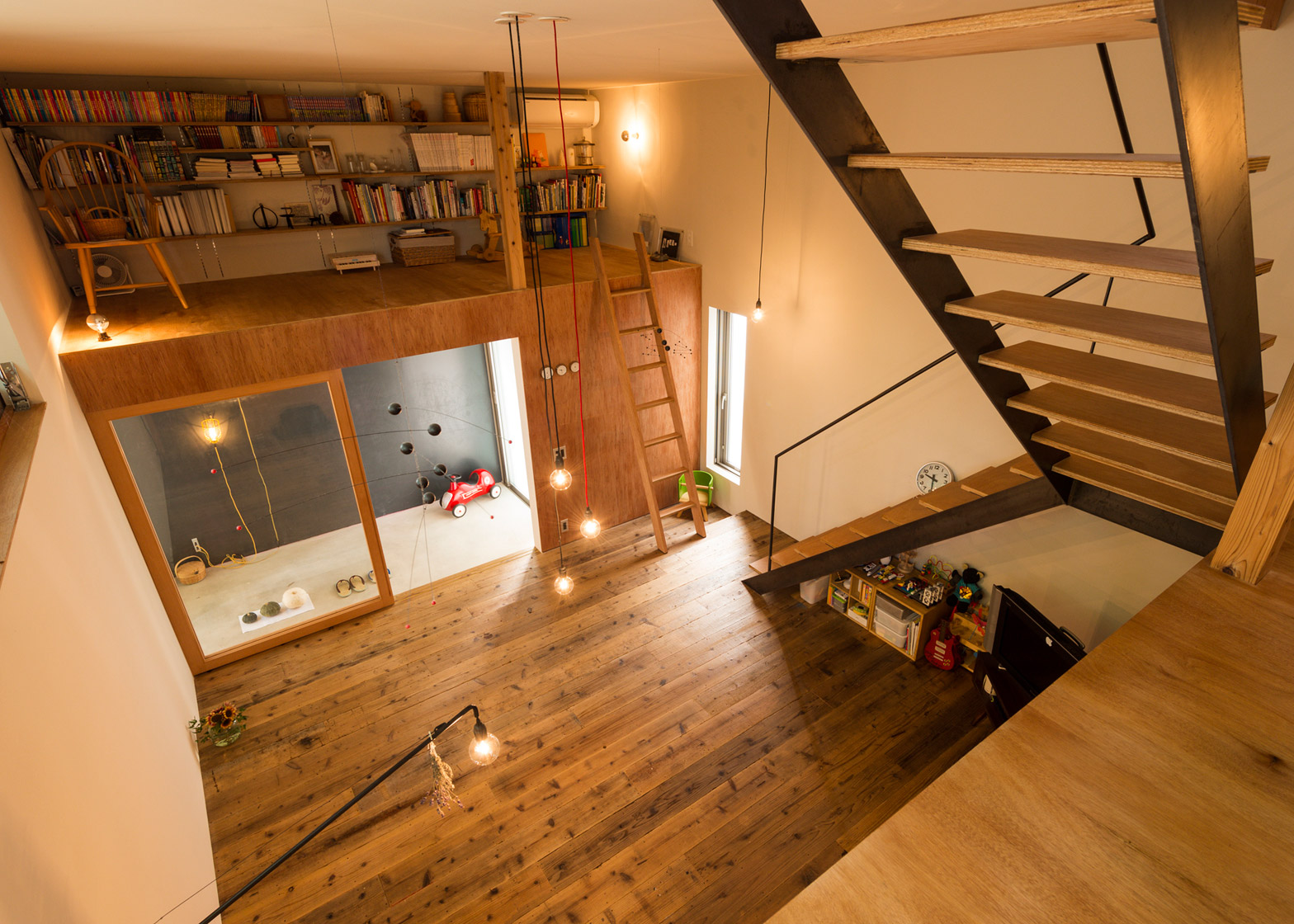This two-bedroom family home in Japan is small but tall, so that residents can look out and see the foliage of neighbouring Japanese elm trees (+ slideshow).
Named House To Catch The Tree, the home was designed by local firm Takeru Shoji Architects for a site near the entrance to a shrine in Nagaoka, in Japan's Niigata Prefecture.
A series of 200-year-old Japanese elm trees – also known as zelkova serratas – stand alongside the site, so the design team designed the building to mirror their proportions.
"There were two requirements from the client," they explained. "Firstly, the house needed to be simple and capable of any future changes. The other was to make good use of the richness of the site."
To create rooms that face out towards to the tree branches, rather than the trunks, the designers made the building unusually tall. It only has two main storeys, but has a height of almost eight metres.
The team also added a large high-level window and a pair of separate mezzanines above the ground floor. One of these leads out to a terrace facing towards the trees.
"Since the Japanese zelkova trees are 20 metres in height, we cannot get a view of the verdant branches from mundane windows on the ground floor," said the team.
"Therefore the living room has 3.5 metres of ceiling height, and moreover a large band window," they added. "We look up at swinging trees in the breeze from the large band window, and we can even touch the trees directly from the terrace at the very end of the loft space."
Externally, the house is clad with lengths of western red cedar, creating vertical stripes that emphasise the height of the structure. It is topped by an asymmetric roof.
A recessed entrance leads through to the main living space via an enclosed space where residents can kick off their shoes.
A ladder ascends to the first mezzanine, while a staircase built from wrought iron and lauan plywood provides access to the second, and also leads up to bedrooms and bathrooms on the uppermost floor.
The two bedrooms are both fairly small, with room for not much more than a bed and a dressing table. But they are separated by a walk-in closet where occupants can store their clothes and other belongings.
Cedar scaffolding boards cover the floor, as well as some of the walls. Takeru Shoji Architects expects these materials to weather in time, revealing the age of the property.
"House To Catch The Tree is aimed at being ever-changing with the lifestyle of the clients and the seasons," said the studio.
"Sunlight filtering through the trees enters the living room in summer. Colourful leaves fall on the table in autumn," added the team.
"The experience is as if we ate, slept, read and played in the forest."
Takeru Shoji Architects is based in Niigata. Other projects by the firm include a house with a cardigan-inspired wall and a residence with a hat-like form on top.
Photography is by Isamu Murai.
Project credits:
Architecture: Takeru Shoji Architects
Structural design: Minoru Sato (M'S structure)







